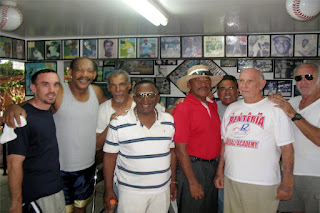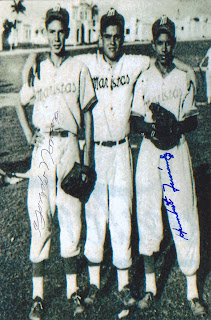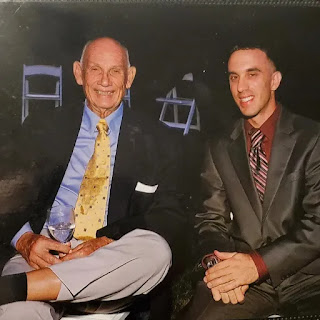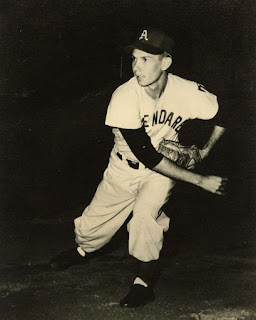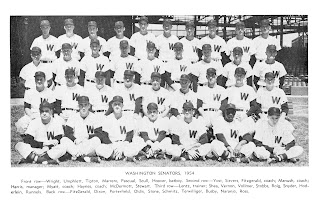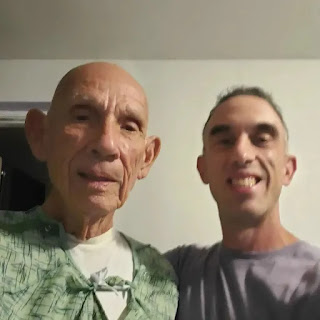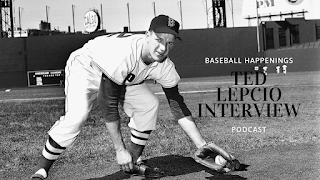Chuck Harmon’s name may not resonate with baseball fans when discussing the sport’s color barrier in the same way as trailblazers Jackie Robinson and Larry Doby; however, the talented multi-sport athlete followed his counterparts into baseball in 1947 to ultimately carve out his own niche in baseball’s record books.
The University of Toledo basketball star who became the first African-American player ever for the Cincinnati Reds
died March 19, 2019, at his Cincinnati home. He was 94.
 |
| 1955 Topps Chuck Harmon / Topps |
Harmon initial athletic fame came from his achievements not on the baseball diamond, but on the hardwood courts across Indiana. He was a basketball star at Washington High School, leading the team to consecutive Indiana state championships in 1941 and 1942. Upon graduating, he played one year at the University of Toledo before he was whisked off to serve in the Navy during World War II.
University of Toledo Basketball Stardom
Harmon had his first taste of stardom when the All-American helped to lead Toledo to the 1943 NIT championship game against St. John’s at Madison Square Garden. He scored six points in their 48-27 loss. It was there where he caught the attention of Abe Saperstein, the legendary owner of both the Harlem Globetrotters.
“My freshman year in college basketball we went to the final game in the NIT,” Harmon told Baseball Happenings via telephone in 2008. “St. John’s beat us in the final game. Saperstein was trying to get us. Back then, the NIT was the big tournament.”
While Saperstein’s interest was deferred by Harmon’s military duties, local scouts kept him on their radar. After returning to Toledo in 1947 to star for their basketball and baseball teams, local scout Hank Rigney took notice and offered the collegian a spot with the Indianapolis Clowns.
“I was at the University Toledo and it was summer vacation,” Harmon said. “I was hanging around school and was supposed to get a recreation job with the city. I was waiting on that to come through. Meanwhile, Hank Rigney, an old scout for the Browns, ran the concession stand at the school. He was an all-around go-getter, baseball scout, football scout, and basketball scout. He was scouting the Clowns, so he knew about me playing basketball and baseball at Toledo.
“He asked me one day if I wanted to play with the Clowns. I was still waiting for the job around school. I was tired of waiting around, so I didn’t know if it was going to come through with the playgrounds or recreation, so I told him yeah. He said, ‘I’ll sign you up with the Clowns.’ I said, ‘Anything to get out of here, I’ve been waiting here doing nothing.’”
A Chance in the Negro Leagues
Suddenly, Harmon went from being an unemployed college student to a member of one of the Negro Leagues most storied franchises. Rigney sent him right into the fire as the Clowns prepared to face the formidable Kansas City Monarchs.
“The Clowns were in Indianapolis playing,” he said. “Hank Rigney gave me a letter to give to the manager of the Clowns. I went over there, signed, and started playing with them. I wouldn’t call it playing with them; I signed with them. On a Wednesday, they had a game that night against the Kansas City Monarchs. I got over there that afternoon, dressed, and played that night. Of course, I didn’t play. I was there; you know trying out, whatever they called it. They were picking up guys as they went along. It wasn’t nothing real formal.”
While the tryout process lacked formality, Harmon assumed the name Charlie Fine to preserve his amateur status while playing with the Clowns. Once the travel rigors of Negro League Baseball set in, Harmon quickly discovered the ride was not as glorious as promised.
“It was one of them deals, we climbed in the bus to go to Michigan to play,” Harmon recalled. “We played up there, and after that game, the next day we went to Michigan City, Indiana. We played that night. You get off one bus, get on another bus, and go for 300 miles and play; you don’t sleep. When we got to Fort Wayne to play a team, it got rained out, so we stayed all night there. We stayed in private homes, that’s where we stayed all the time when we [went] to those towns.”
Due to the barnstorming nature that fed the Negro Leagues, teams did not have the luxury of rescheduling rained out contests. Harmon walked right into the middle of one of the miseries of road life that was markedly different from the first class treatment he experienced while playing college basketball.
“We got rained out in Michigan City and Fort Wayne, and when we went to Chicago — that was the first night we stayed in a hotel. I think we had a Sunday doubleheader. I dressed there. To this day, I don’t think I got into a game at all from Wednesday to Sunday. That was too much for me [coming from] playing in college, staying in hotels, and eating in the fine restaurants. Playing in Toledo, we stayed in the best hotels and played in Madison Square Garden.”
Harmon thought that he could parlay his experience with the Clowns to stay on with Saperstein’s Globetrotters. After his miserable week with the Clowns, he decided to pivot and return to Toledo for the summer.
“I don’t remember getting in a game or not because we had four or five games, we played two, the first night and the night in Chicago, and then we got rained out,” Harmon said. “I said to myself, ‘This isn’t for me.’ In my mind, what was going to happen was, the Globetrotters [would take] me and another guy. He had been trying to get us to play with them anyway. The basketball was probably worse traveling than the baseball. Traveling on the bus and sleeping in private homes if you could. I told him no thanks.”
A Door Opens with the St. Louis Browns
Back in Toledo from his brief foray into the Negro Leagues, Harmon waited on the city for his recreation job. By that time, the St. Louis Browns signed both Hank Thompson and Willard Brown to major league contracts. With the organization’s door open, Rigney jumped at the opportunity to get Harmon into the fold.
“A couple weeks later after being back there, the job with the city still hadn’t come through,” Harmon said. “Finally, he came over to school and [told me] they wanted me at the [Toledo] Mud Hens office [because] St. Louis wanted to sign me to a contract. That was like going to the World Series hearing that. Going with a major league team, as they always said, that was ‘organized ball.’”
While Brown and Thompson are often touted as Major League Baseball pioneers, Harmon was part of a select group who quietly pried opened doors at a time when only a few teams embraced integration. Standing in those offices, he saw the hope that was newly available to African-American ballplayers.
“We went to the office there in Toledo,” he said. “I didn’t have any idea of signing a Triple-A contract, but still that was a step to the major leagues. They wanted to send me to upstate New York, to the Canadian-American League, Class C. They sent me up to Gloversville [New York]. It was organized ball, and you could see the footsteps to major league ball if you were good enough.”
During our talk, Harmon chose not to focus on struggles with Jim Crow segregation, but the joy of being paid to play baseball. He thrived in his new environment.
“I did pretty good and finished the season out there,” he said. “I played 50 something games, and I was on cloud nine. You didn’t care [because] you saw them checks! The first time you saw a check, you got paid. Some guys played week to week. They played and spent it. Being in organized ball, we got paid and stayed in hotels. It was a glory road for me.”
Harmon returned to Toledo to play basketball for the 1947-48 school year. He put his minor league dreams on hold to play for the Fort Wayne General Electrics in 1948 while finishing his college basketball eligibility. With his college basketball career behind him, Harmon came back to the Browns, even after they sent him down a level in the minor leagues.
“Gloversville bought my contract and they sent me to Olean, New York in Class D,” he said. “Up there I was hitting about .370-.380 each year. When Gloversville sent me up there, I started hitting, and I got married. My wife was expecting, and I told them that when they sent me down. That’s when I really started wearing the ball out there. I talked to Gloversville and my wife was expecting, so I told them if I was hitting over so-and-so, would [they] bring me back to Gloversville. That incentive helped. Meanwhile, the Browns were having money problems, moving their clubs, and getting rid of players. During the winter, they sold the teams to independent buyers, and Olean bought my contract.”
A Cincinnati Reds Courtship
Unbelievably, it took two years of Harmon hitting .374 and .375 with Olean before the Reds bought his contract in 1952. He jumped to their Double-A team in Tulsa in 1953 and those footsteps he saw in 1947 were finally starting to lead on the right path.
“I went to Tulsa next year and I was leading the team in everything,” he said. “I was driving in all those runs. I had a bad day if I just got three hits. If I got two hits, it was bad.”
Harmon spent that winter sharpening his skills in Puerto Rico by playing for the Ponce team. He tore through the league and finished second in hitting, just below Luis “Canena” Marquez, and three points ahead of a young Hank Aaron. On the cusp of realizing his major league dreams, Harmon sensed that being in the presence of young talent and hardened Negro League and Puerto Rican veterans primed him for the next step.
“They had a lot of great players in winter ball,” he said. “You knew they were going to make it.”
Making History in the Major Leagues
He made the Reds out of spring training, and on April 17, 1954, against Aaron’s Milwaukee Braves, Harmon made history. His seventh-inning pinch-hitting appearance minted him as the first African-American to appear in a game for the Reds. Historians have argued that Nino Escalera, a Puerto Rican who batted right before Harmon, was the first black player for the franchise. Almost 65 years later, Harmon was more concerned with being on the team than being first.
“All that didn’t faze me a bit,” he said. “You knew you were good and that you were one of the best. That’s all you thought about. Not being the first black. It didn’t dawn on me at all. You know, all the players down there, you’re just trying to beat them. You’re trying to be better than them so that you get picked. You didn’t think that you would get picked before this guy or that guy, all you thought about was being on the team.”
Harmon played in the majors for four seasons from 1954-1957, batting .238 in 592 at-bats with the Reds, St. Louis Cardinals, and Philadelphia Phillies. He continued to play in the minors until 1961. He made one last Negro League connection in 1958 when the Phillies sent him to their Triple-A team in Miami with Satchel Paige.
“He could throw that ball,” Harmon said. “I’m just glad I didn’t have to face him, at 52! ... You just couldn’t believe that old what he could do in there. You were in awe of him more than trying to figure him out.”
He remained in the game for a few years as a scout with the Atlanta Braves and Cleveland Indians before settling in as a clerk for the Hamilton County Court of Appeals in Cincinnati. The Reds honored him in 2015 with a statue at their Youth Baseball Academy in Roselawn, Ohio.


